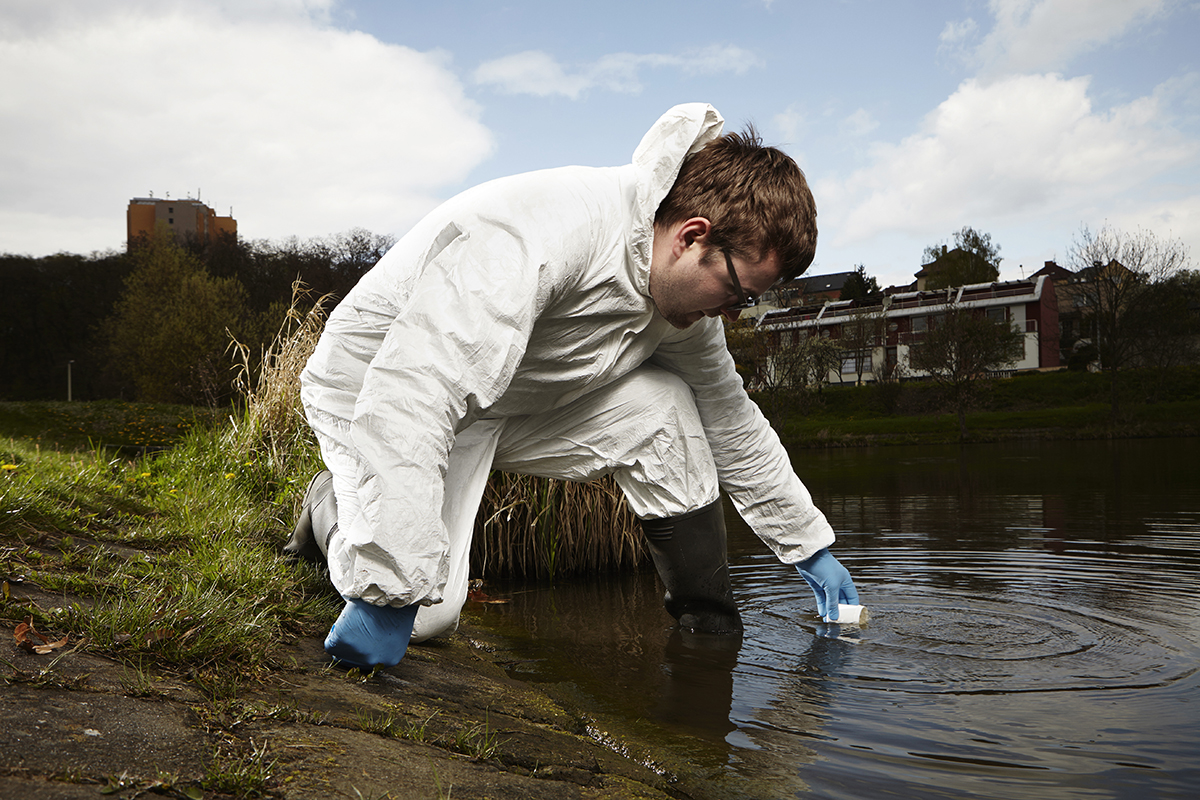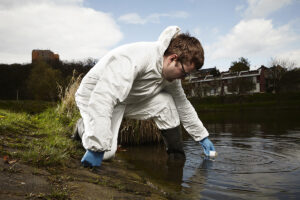
PFAS, short for “Per- and polyfluoroalkyl substances”. Maybe you’ve heard of them, maybe not. Regardless if you’re aware of PFAS chemicals, their applications, and the potential dangers associated with these chemicals, now is the time to take note because odds are you’ve encountered them frequently.
PFAS in everyday life
So, what are PFAS chemicals? Per- and polyfluoroalkyl substances are often referred to as PFAS. PFAS refers to a class of chemicals used for grease resistance in many consumer products such as rain jackets, cookware, dental floss, and food service packaging. There are nearly 5,000 types of PFAS that exist in both long and short chain forms.
For those of us who aren’t chemists let’s simplify things. PFAS are common and found in many products that we encounter throughout everyday life. PFAS first entered the market in the 1930’s as degreasers and flame retardants for cookware etc. Today, PFAS is found in food service packaging, cookware, and other household consumer items. The danger in PFAS lies in their longevity. PFAS are considered “forever chemicals” which accumulate in the body over time.

Dangers of PFAS
Now that we have a better understanding of PFAS, it is important to recognize the dangers associated with these chemicals.
PFAS are common and most people have been exposed to PFAS at some point in their lives. The dangers surrounding PFAS relate to the accumulation and retention of PFAS particles in the body when accumulated over time.
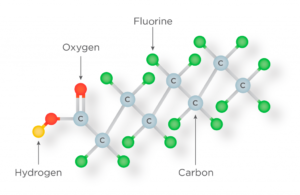
Source: pfasfacts.com
The following is provided per the U.S. Environmental Protection Agency:
There is evidence that exposure to PFAS can lead to adverse health outcomes in humans. The most-studied PFAS chemicals are PFOA and PFOS. Studies indicate that PFOA and PFOS can cause reproductive and developmental, liver and kidney, and immunological effects in laboratory animals. Both chemicals have caused tumors in animals. The most consistent findings are increased cholesterol levels among exposed populations, with more limited findings related to:
- low infant birth weights,
- effects on the immune system,
- cancer (for PFOA), and
- thyroid hormone disruption (for PFOS).
There are a variety of ways that people can be exposed to these chemicals and at different levels of exposure. For example, people can be exposed to low levels of PFAS through food, which can become contaminated through:
- Contaminated soil and water used to grow the food,
- Food packaging containing PFAS, and
- Equipment that used PFAS during food processing.
People can also be exposed to PFAS chemicals if they are released during normal use, biodegradation, or disposal of consumer products that contain PFAS. People may be exposed to PFAS used in commercially treated products to make them stain- and water-repellent or nonstick. These goods include carpets, leather and apparel, textiles, paper and packaging materials, and non-stick cookware.
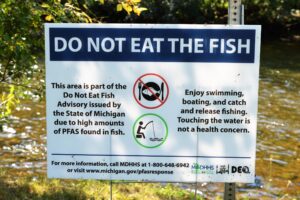
A sign in Michigan warning of the danger of fish contaminated with PFAS.
What’s being done to control PFAS?
With the long list of dangers associated with PFAS, one might wonder what’s being done to control these chemicals. Luckily, there is are existing bans and legislation at both state and federal levels. Along with this legislation, the BPI (Biodegradable Products Institute), CMA (Compost Manufacturing Alliance), and the compostable products industry have taken a stance against the use of PFAS in order to support safer products and applications.
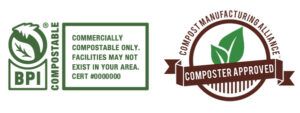
See below for an overview of PFAS bans and legislation:
State:
Washington; Date effective: 01/01/2021
Maine; Date effective: 01/01/2022
Pending State Legislation:
California: considering – no bills yet
Bills introduced:
Arizona, Illinois, Iowa, Mass., Minn., New Hamp., New York, Rhode Island, Vermont, Virginia
Municipal Policy In California:
San Francisco, Berkeley, and Santa Cruz
National level:
US House of Representatives: passed HR535 that addresses long-chain PFAS. Does not impact foodservice packaging or the short-chain PFAS used in foodservice packaging. The Senate and White House have indicated they will not support/veto.
Compostable Products Industry Position on PFAS
Compostable resin and product manufacturers, along with the Biodegradable Products Institute (BPI) have taken a proactive stance against the use of PFAS in certified compostable products and food service packaging and no BPI certified products contain PFAS.
The BPI has set a threshold of 100 parts-per-million of total fluorine which went into effect 01/01/2020. This requires that:
- Products with more than 100 PPM of total fluorine will not be certified, unless documentation is provided proving that fluorine is not from PFAS
- Manufacturers must declare PFAS is not intentionally added
These efforts ensure that all BPI certified compostable products are safe for consumers and will effectively compost in an industrial composting facility and generate high-quality compost free from harmful chemicals.

As producers of certified biobased and compostable products and resin technologies, we’re committed to providing the highest-quality products to support zero-waste, organics diversion, and composting while incorporating principles of the Circular Economy. As such, all Natur-Tec products are free of PFAS, heavy metals, and all other dangerous chemicals that can be found in traditional plastics.
We’re helping create a sustainable future! To learn more about how Natur-Tec is pioneering safe and sustainable biobased and compostable plastics, visit our website at www.naturtec.com.
